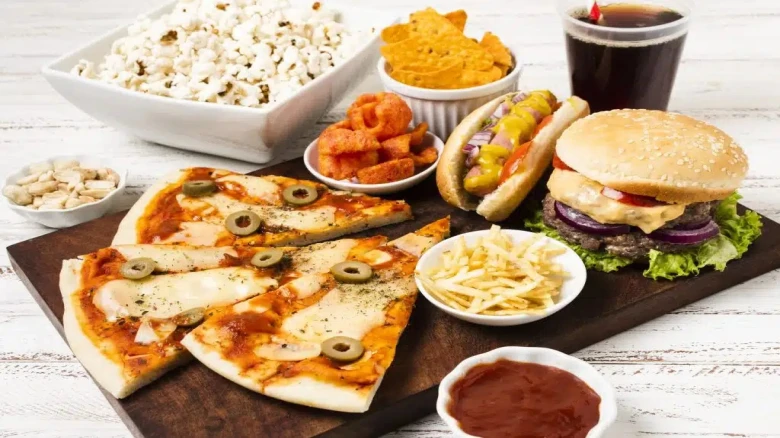Ultra-Processed Foods
Processed Foods and Health : Processed foods are generally thought to be low-grade to unprocessed foods. a packaged food item contains many ingredients The term may suggest that, perhaps even artificial flavors, colors, or other chemical additives. Often referred to as convenience processed foods or pre-prepared foods, are suggested to contribute to the obesity epidemic and the rising prevalence of chronic diseases like heart disease and diabetes. However, the definition of processed food varies widely depending on the source:
The U.S. Department of Agriculture (USDA) – USAD defines processed food as one that has undergone any changes to its natural state—that is, any raw agricultural commodity subjected to cleaning, milling, cutting, chopping, washing, canning, freezing, drying, heating, pasteurizing, blanching, cooking, dehydrating, mixing, packaging, or other procedures that alter the food from its natural state. The food may include the addition of other ingredients such as flavors, nutrients preservatives, and other food additives or substances approved for use in food products, such as sugars, salt, and fats.
Types of Food Processing
Unprocessed or minimally processed foods:
Unprocessed foods include the natural edible food parts of animals and plants Minimally processed foods have been a little altered so they can be more easily prepared stored and eaten; the food level does not substantially change the nutritional content of this processing. Examples include removing inedible, cleaning and or unwanted parts, grinding, refrigeration, pasteurization, freezing, fermentation, and vacuum-packaging. This allows the food to be preserved for a long time and remains safe to eat. Many vegetables, fresh fruits, whole grains, plain yogurt, nuts, meats with no added sugar or artificial sweeteners, tea, coffee, and milk fresh and dried pasta, are in this category.
Processed culinary ingredients:
This category includes food ingredients used in kitchens to prepare and season foods that are derived from minimally processed foods by refining, pressing, grinding, or milling. They are typically used to prepare other foods but not eaten on their own. Examples include seeds, and nuts, oils from plants. vinegar made by acetic fermentation of wine; honey extracted from combs, and syrup from maple trees without added stabilizers or flavors.
Processed foods:
In this category, the processing increases the durability of foods or enhances or modifies their texture and flavor. Processed foods derive from either of the two previous groups but have added sugar, salt, or fat. Some canned fruits and vegetables, freshly made bread, some cheeses, and canned fish are examples. These processed foods usually are made from at least 2-3 ingredients and can be readily eaten without further preparation.
Ultra-processed foods:
Ultra-processed foods also commonly referred to as “highly processed foods are foods from the prior group that go beyond the incorporation of sugar, salt, and fat to include artificial colors and preservatives, flavors, thickeners, artificial sweeteners and emulsifiers that promote, preserve, and enhance texture, shelf stability and increase palatability. several processing steps using multiple ingredients are involved in an ultra-processed food. They are often mass-produced with low-cost ingredients making them cheap and highly cost-effective. It is believed that these foods are designed to specifically increase cravings so that people will overeat them and purchase more. Ultra-processed foods are typically ready-to-eat with slight additional preparation. Not all but some of these foods tend to be low in nutrients and fiber. Examples are, cookies, some crackers, sugary drinks chips, breakfast cereals some frozen dinners, and luncheon meats. These foods may partially if not completely replace minimally processed foods in some people’s diets. One study using data from the U.S. National Health and Nutrition Examination Survey found that ultra-processed foods comprised about 60% of total calories in the U.S. diet.
Top 10 Most Watch Marathi Movies 2024 List
Study:
By Harvard University, a recent study spanning over 30 years and tracking 1,14,000 participants, has highlighted the risks associated with consuming ultra-processed foods (UPF).
Higher consumption of most ultra-processed foods is linked to a slightly higher risk of death, with poultry, and seafood-based products, ready-to-eat meat, dairy-based desserts and sugary drinks, and highly processed breakfast foods showing the strongest associations.
Ultra-processed foods are those food items that contain ingredients and additives ] not commonly found in home kitchens, such as artificial, color, sweeteners, and preservatives. These are foods that are high in and lack nutrients and saturated fats.
Conclusion:
Food processing is a very broad spectrum that ranges from basic technologies like milling or freezing to the incorporation of additives that promote shelf stability or increase tastiness. As a general rule, minimally processed or foods emphasizing unprocessed in the daily diet are finest. That said, the use of processed and even ultra-processed foods is the selection of the consumer, and some pros and cons come with each type. The Nutrition Facts Label and ingredients list can be useful tools in deciding when to include processed food in one’s diet. There is evidence showing an association between certain types of food processing and poor health outcomes, especially low-nutrient ultra-processed foods that contain added excess sodium, sugars, and unhealthful fats. But there also exist ultra-processed foods that have low amounts of these ingredients while being fortified with beneficial nutrients such as protein, fiber, calcium, and vitamins B and D.
